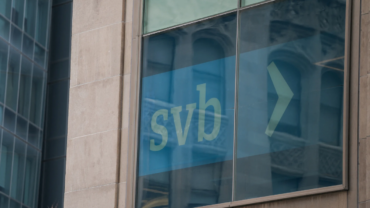How can organizations link their DEI efforts with their learning and development (L&D) and career development strategies to leverage the power of both?
After two years of a global pandemic, some organizations are excited about returning to some version of normal. For many employees, however, normal wasn’t so great. With talent retention at the forefront of their minds, leaders instead should be examining ways to go back better than normal.
Most leaders understand that attracting and retaining diverse talent is good for business. They channel their diversity, equity & inclusion (DEI) efforts into gateway moments: recruiting, hiring, and promoting. They run training programs on unconscious bias and examine policies and procedures. This is necessary and valuable work, but sadly we aren’t seeing the results in representation at the top. This creates distrust with members of non-dominant groups who experience the lack of impact firsthand but are being told about all the great things the organization is doing to promote DEI.
Three ways to integrate L&D and DEI
If organizations are serious about DEI, it’s time we embed it into learning and development (L&D) and career development strategies, both at the formal and informal levels. Here are some ways that can happen:
1. Redesign on-boarding for inclusion
Beyond interviewing, how new employees are on-boarded is usually their first significant introduction into your organization and its culture. Design your on-boarding process with inclusion in mind. Start by critically questioning aspects, big and small, of the process, such as:
-
-
- Do your icebreakers inadvertently “other” some employees?
- Do your programs provide advantages to certain groups to process and apply the knowledge more than others? Have you decoded workplace norms, behaviors, and expectations in a way that allows for greater understanding and application?
- Whose voices are invited to teach programs (and whose are not)?
- Have you normalized curiosity, wellness, and a growth mindset? Who is comfortable asking questions, speaking up, or sharing concerns?
- Does your on-boarding support access to networks of influence for everyone?
-
2. Bring the DEI lens to skills training and mentoring
Imagine sitting in a program about effective writing. You go back to your office and diligently apply the tips, but your work still gets harsher feedback than the work of your colleague with a different skin color. The experience is common for racialized talent, and addressing the uneven landscape of how competence is perceived is critical.
Our skills programs fall short by stating what without breaking down the nuance of how (for example, thinking that the successful ones should just get it). Engage both L&D and DEI experts to examine skills and leadership training — such as practice management, communication, writing, presentation skills, delegation, giving & receiving feedback, and business development. Then, consider if:
-
-
- Your programs teach strategies that work for some and not others.
- You decode the unwritten rules, norms and behaviors expected in the workplace.
- You provide opportunities to challenge and reframe those norms and expectations (including how we define success) to allow for greater agency in how skills are applied.
- You need to evolve the skills you teach to include cultivating a growth mindset, cultural competence, workplace empathy, dealing with perfectionism, emotional regulation, and managing imposter syndrome.
- You create psychological safety in programs to ask questions.
- Leaders and teachers are modeling openness to understanding cultural competence and improving inclusion and belonging skills to bridge and appreciate difference.
-
Encourage and coach those leaders that are teaching programs to make the invisible visible — consider their own lens, their own blind spots, and what advantages or disadvantages others may have in applying the strategies being offered. Remind, support, and make it easy for teachers to deliberately signal belonging — things like proper name pronunciation and sharing their own narratives or challenges can go a long way.
3. Increase just-in-time nudges and informal touchpoints
Everyone absorbs and processes differently based on their identity, background, lived experience, and perspective. L&D can help connect the formal learning to the day-to-day applications of that learning by looking at the many intersections with the practice and examining how we might incorporate DEI nudges, including:
-
-
- Adding formal and informal touchpoints right after programs to challenge, discuss, personalize, and help people apply the skills.
- Examining small but frequent decision and access points to better support learning, particularly around pivotal career moments of influence (giving feedback, leading meetings, speaking opportunities, etc.)
- Reminding mentors and leaders of the small acts that can shape better outcomes — such as amplifying voices, giving credit, offering opportunities, inviting people to meetings, or providing access to networks — not just in formal programs, but with frequent reminders, discussions, and learning opportunities.
- Actively engaging people from all communities to measure impact.
-
To be clear, bringing L&D and DEI together doesn’t mean teaching “diverse talent” how to make it in a white workplace or how to assimilate. Embedding DEI within an organization’s learning and development process means looking at all training through a DEI lens — to better support those coming into the organization, provide transparency for those expending energy navigating the workplace, and increasing awareness and accountability for those learning leadership, managerial, and supervisory skills.
By weaving DEI concepts into on-boarding and skills-based learning that the organization already provides and values, people are learning DEI concepts with context and are better able to connect the concepts to their day-to-day relevance and application. Tapping your organization’s L&D experts to help with boosting DEI touchpoints and nudges will amplify the impact beyond what DEI initiatives alone could do.







